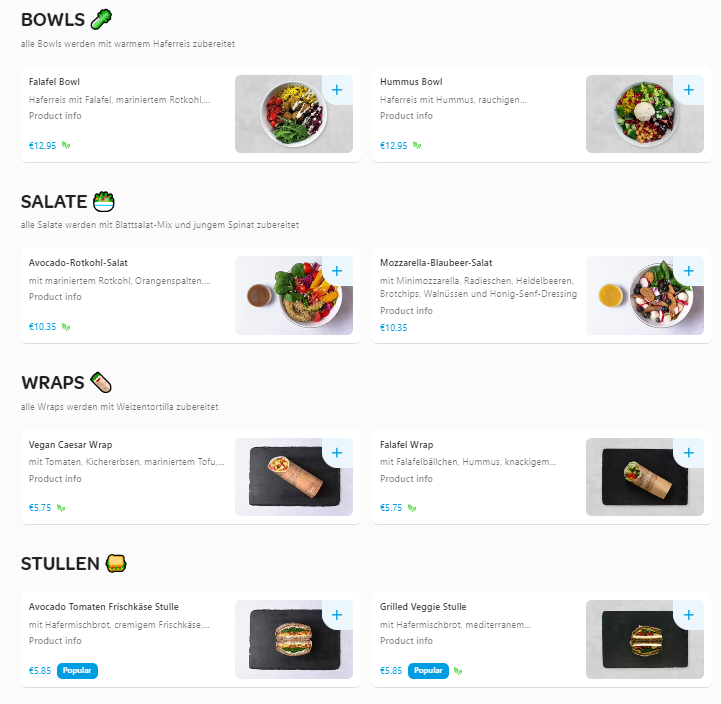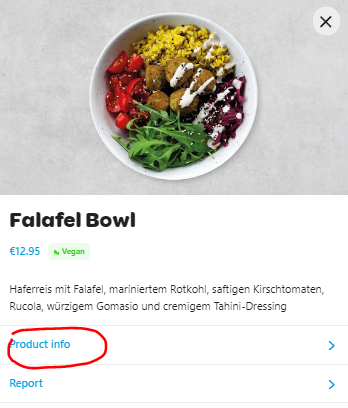Creating the Optimal Restaurant Menu for Wolt: Tips for Success
Menu Mojo•September 24, 2024•7 min read|1360 words•More Details

Creating the optimal restaurant menu for Wolt can be a game-changer for your business. As someone who's spent countless hours analyzing food delivery trends, I know that a well-crafted menu isn't just about delicious dishes—it's about understanding what your customers crave and how they order.
In the fast-paced world of food delivery, your menu needs to be both appealing and efficient. From enticing descriptions to strategic pricing, every detail can influence a customer's decision. Let's dive into what makes a menu not just good, but optimal for Wolt, ensuring your restaurant stands out in a crowded market.
Understanding The Basics
Optimizing a restaurant menu for Wolt involves several key elements. Knowing customer preferences becomes essential. Observing which dishes receive the most orders helps tailor the menu to popular demand. Listing popular items with examples like "classic cheeseburger" or "margherita pizza" ensures these choices are easy to find.
Using enticing descriptions for each dish engages customers. Descriptions should highlight unique ingredients and cooking techniques. For example, "succulent grilled chicken glazed with honey and herbs" can sound more appealing than plain "grilled chicken."
This is why you should use MenuMojo to optimize your menu: www.themenumojo.com
Strategic pricing affects customer decisions significantly. Pricing needs to be competitive but also sustainable to cover costs. Grouping dishes into price categories, such as appetizers priced between $5-$10 and main courses between $15-$25, helps create a balanced menu.
Visual presentation of the menu plays a crucial role. High-quality photos of dishes attract customers' attention. Use clear, well-lit images to showcase menu items, ensuring the visuals are consistent with the actual dishes served.
Including dietary options broadens the restaurant's appeal. Offering vegetarian, vegan, gluten-free, and other diet-specific dishes caters to a wider range of customers. Clearly label these options in the menu.
Utilize customer feedback to refine the menu continuously. Regularly monitoring reviews and ratings on Wolt provides insights into what's working and what's not. Adjust the menu based on this feedback to improve customer satisfaction.
Understanding these basics helps in creating a menu that not only attracts but also retains customers, boosting overall restaurant performance on Wolt.
Key Factors To Consider
Creating an optimal restaurant menu for Wolt requires attention to several critical elements.
Menu Variety
Offering a diverse menu is essential for attracting a broad customer base. Including a mix of appetizers, main courses, desserts, and beverages can cater to different tastes and dietary needs. Diverse options like vegetarian (e.g., roasted vegetable salad) and gluten-free (e.g., quinoa bowls) ensure inclusivity. Rotating seasonal dishes and limited-time specials can create excitement and encourage repeat orders.
Pricing Strategy
A well-thought-out pricing strategy impacts customer decisions and restaurant profitability. Competitive pricing should balance affordability and sustainability. Group items into distinct price ranges to appeal to various customer segments. Using combo deals or value meals can drive up the average order value. Regularly analyzing sales data helps adjust prices based on demand.
Customer Preferences
Analyzing customer preferences helps refine the menu to meet popular demand. Tracking which items receive the most orders provides insights for focusing on top-sellers. Engaging customers through feedback and reviews on Wolt highlights areas for improvement. Incorporating preferred ingredients and popular dishes, like classic options such as cheeseburgers and margherita pizzas, makes the menu more appealing.
By focusing on these key factors, the restaurant menu for Wolt can attract and retain a diverse customer base, ultimately enhancing overall performance.
Designing An Optimal Menu
Designing an optimal menu for Wolt requires thoughtful planning to enhance customer satisfaction and drive sales. A well-structured menu creates a delightful user experience and highlights your best offerings.
Menu Layout
A clear, intuitive menu layout improves user experience. Start with appetizers, followed by main courses, desserts, and beverages. Use distinct sections for categories, adding visuals like icons for special diets. Limit items per category to ensure easier decision-making. Use a legible font, contrasting colors, and ample spacing to make the menu easy to read.
Highlighting Special Items
Highlight special items to draw attention and increase sales. Use callout boxes or vibrant text for chef’s specials or signature dishes. If a dish is popular, include a badge or label indicating its popularity. Provide enticing descriptions and emphasize unique ingredients or cooking methods. For example, "Slow-cooked Beef Ribs" can feature a description like "tender ribs marinated in a savory herb blend, slow-cooked for 12 hours".
Seasonal Offerings
Incorporate seasonal offerings to keep the menu exciting. Rotate dishes based on seasonal ingredients to highlight freshness and variety. Feature limited-time specials to create urgency and encourage repeat orders. If it's autumn, highlight pumpkin-based dishes or hearty stews. Use seasonal graphics like snowflakes for winter items to visually differentiate these offerings.
By incorporating these strategies, I can create an optimal menu for Wolt that attracts and retains customers, ensuring they enjoy a seamless and satisfying experience.
Menu Optimization Techniques
Ensuring a restaurant menu for Wolt performs optimally involves several techniques. These approaches help tailor the menu to meet customer needs and maximize performance.
Data-Driven Decisions
Leveraging data can improve menu design. Observing which dishes consistently receive orders can highlight customer preferences. I analyze sales data to identify these popular choices. For instance, if "classic cheeseburger" or "margherita pizza" frequently top the order lists, featuring them prominently is essential. Additionally, understanding peak ordering times and popular days can help adjust item availability and promotions. This data-centric approach can streamline decision-making and enhance customer satisfaction.
Feedback Collection
Customer feedback provides invaluable insights. Collecting reviews, both positive and negative, helps identify areas for improvement. I use these insights to tweak menu items, descriptions, and even presentation. For example, if customers note that a dish lacks flavor, it prompts a review of its ingredients and preparation method. Engaging with customers through surveys or review prompts on Wolt can also drive a sense of community and loyalty. Prioritizing customer feedback ensures the menu evolves according to consumer demands and preferences.
By integrating data-driven decisions and actively collecting feedback, the restaurant menu becomes a dynamic entity that continually adapts to market and customer needs.
Leveraging Technology
Optimizing a restaurant menu for Wolt isn't just about choosing the right dishes; it's also about using technology to enhance and refine your offerings. With advancements in data analytics and real-time monitoring, restaurants can stay ahead in the competitive market.
Using Analytics
Analyzing customer data provides critical insights into what works and what doesn't. By examining order history and customer preferences, I can identify which items are most popular and which ones are underperforming. For instance, if "spicy chicken wings" consistently receive high orders, it indicates a strong demand that should be emphasized. Conversely, low-performing items can be replaced or adjusted to better meet customer tastes. Utilizing platforms like Google Analytics or specialized restaurant software helps me meticulously track and understand these patterns.
Product info is important: What are your customers looking for?

Real-Time Adjustments
Real-time monitoring allows me to make instant adjustments to the menu based on current trends and customer feedback. When I see that a particular dish is trending on social media or receiving frequent positive reviews, I can promote it more prominently on the Wolt menu. If data shows a sudden drop in orders for a specific item, I can investigate potential issues such as ingredient quality or preparation time. Tools like AI-driven inventory management systems keep track of stock levels, enabling me to manage supply more efficiently and reduce waste.
By leveraging these technological advancements, I ensure the menu remains dynamic and responsive to customer needs, ultimately enhancing their dining experience and driving higher satisfaction rates.
Best Practices From Successful Menus
Creating an optimal restaurant menu for Wolt involves more than just delicious dishes. By understanding customer preferences and leveraging data analytics, restaurants can tailor their offerings to meet demand effectively. Engaging descriptions and strategic pricing are key elements in making dishes appealing and competitive.
Menu variety is essential to cater to diverse tastes and dietary needs. Incorporating seasonal dishes and limited-time specials can keep the menu exciting and encourage repeat orders. Technology plays a crucial role in menu optimization, allowing real-time adjustments based on current trends and customer feedback.
Using AI-driven inventory management systems can help manage stock levels efficiently and reduce waste. By continuously refining the menu through data-driven decisions and customer feedback, restaurants can enhance the dining experience and increase customer satisfaction.